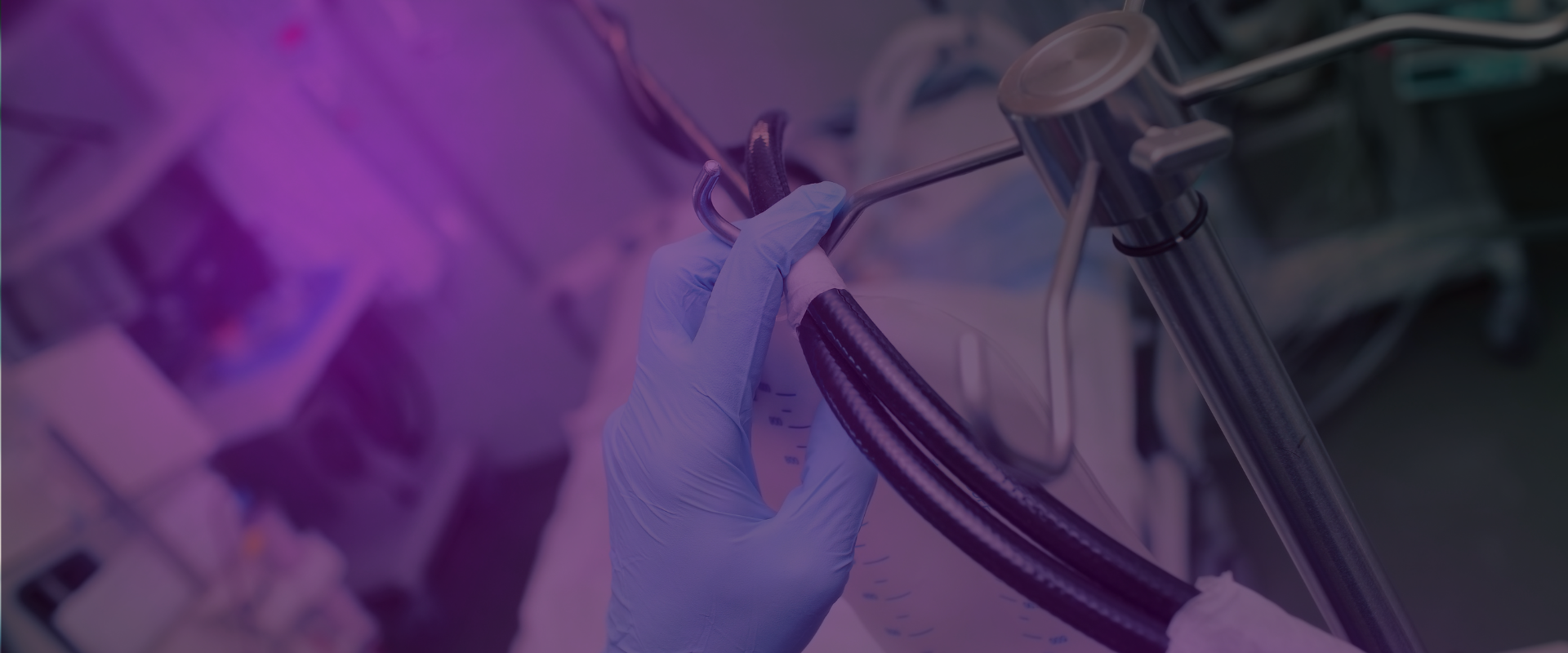Maximizing ROI Through Strategic Equipment Management
CG - White Paper - would be good for downloadable PDF
Introduction: The efficiency and effectiveness of a healthcare facility often hinge on the quality and reliability of its equipment. With increasing costs and stringent regulations in healthcare, strategic equipment management has emerged as a pivotal point for maximizing Return on Investment (ROI). This whitepaper dives deep into how regular maintenance and thorough cleaning of medical equipment not only preserves its life but also leads to significant cost savings, improved patient satisfaction, and adherence to compliance norms.
1. The Direct Link Between Equipment Health and Financial Health
Every piece of malfunctioning or under-maintained equipment is a potential financial liability. The intricacies of healthcare operations mean that even minor equipment issues can balloon into substantial monetary losses. While the direct costs associated with repairs or replacements are evident, there are broader implications to consider when evaluating the full financial picture:
-
Extended Equipment Lifespan: Regular maintenance and deep cleaning prevent the wear and tear that can shorten the lifespan of medical equipment. By keeping devices in optimal condition, facilities can postpone the significant costs associated with purchasing new equipment. Over time, these deferred costs can accumulate into substantial savings, ensuring a more consistent operational flow with fewer disruptions due to equipment replacements.
-
Minimized Risk of Litigations: Medical equipment that fails or malfunctions can lead to adverse patient outcomes. This not only tarnishes a facility's reputation but also elevates the risk of expensive lawsuits. By investing in strategic equipment management, facilities can drastically mitigate these risks, ensuring patient safety and safeguarding against potentially crippling legal expenses.
-
Operational Continuity and Efficiency: Frequent equipment breakdowns can interrupt the smooth operation of a healthcare facility. This disruption often leads to delayed appointments, rescheduling, and extended wait times, which can result in decreased patient satisfaction and potential revenue loss. Maintained equipment ensures operational continuity, leading to optimized patient flow and maximized daily revenue.
-
Reduction in Emergency Repairs: Emergency repairs often come with a premium price tag. By preemptively addressing potential equipment issues through regular maintenance and cleaning, facilities can avoid these unexpected and inflated costs, further boosting their financial health.
By understanding and addressing the direct and indirect costs associated with equipment health, healthcare facilities can better position themselves for financial success. Strategic equipment management becomes not just a maintenance task but a pivotal financial strategy.
2. Patient Satisfaction: More Than Just Medical Outcomes
The modern patient experience extends far beyond the simple efficacy of medical treatments. As the healthcare landscape becomes more competitive, patients, now more informed and discerning, evaluate their experiences on a wide range of factors. One such crucial factor is the cleanliness and functionality of medical equipment. Here’s how well-maintained equipment directly influences patient satisfaction:
-
Trust in Treatment: The first impression is everything. When a patient observes clean, well-maintained equipment, it fosters trust. They are more likely to believe they're receiving top-tier care from a facility that cares about its appearance and functionality.
-
Safety Perceptions: Unclean or malfunctioning equipment can raise red flags for patients. They might wonder, "If this equipment is not well-cared for, what else is amiss?" Clean, fully functional equipment instills a sense of safety and professionalism, assuring patients they're in good hands.
-
Reduced Wait Times: Well-maintained equipment is less likely to malfunction, ensuring treatments are not delayed. This timely service contributes significantly to positive patient experiences. Any interruptions due to equipment issues can lead to longer hospital stays or extended appointment times, directly affecting patient satisfaction.
-
Direct Feedback on HCAHPS Scores: The Hospital Consumer Assessment of Healthcare Providers and Systems (HCAHPS) score is a key performance metric for patient satisfaction. Patients are directly asked about the cleanliness of the hospital environment. Ensuring equipment is consistently clean and functional can lead to higher HCAHPS scores, impacting both the reputation and financial health of the facility.
-
Empowering Healthcare Professionals: When equipment is in top shape, healthcare professionals can operate at their best. They don’t have to waste time troubleshooting equipment issues, allowing them to focus on patient care. A smoother, more efficient interaction between medical staff and patients enhances the overall patient experience.
By prioritizing equipment cleanliness and functionality, healthcare providers can offer an enhanced patient experience, leading to better reviews, increased patient retention, and positive word-of-mouth – all of which are invaluable in today's competitive healthcare environment.
3. Regulatory Compliance: Meeting and Exceeding Standards
Regulatory compliance is not just about adhering to rules — it's about upholding a standard of excellence in healthcare. This commitment ensures that patients receive the safest, highest quality care possible. Proper equipment maintenance plays a pivotal role in achieving and maintaining these standards.
-
Setting the Bar High: Regulatory bodies set specific guidelines for equipment maintenance and cleanliness. Adhering to these standards not only ensures compliance but demonstrates a facility's dedication to excellence. It becomes a testament to the commitment to offer the best care, reflecting positively on the institution's reputation.
-
Avoiding Penalties: Non-compliance can lead to hefty penalties, both financial and reputational. By investing in regular equipment cleaning and maintenance, healthcare facilities can avoid these setbacks. Financial penalties aside, falling below regulatory standards can damage a facility’s reputation, making it harder to attract and retain patients.
-
Promoting Patient Safety: Regulations are designed with patient safety in mind. When equipment is regularly maintained and cleaned, the risks of malfunctions or infections decrease substantially. This proactive approach ensures patient safety and well-being, minimizing the chances of complications.
-
Streamlined Audits: Regular inspections and audits are a part of healthcare operations. When equipment is well-maintained, these audits become smoother, with fewer areas of concern. It also reduces the administrative burden of documenting issues and then ensuring they're rectified.
-
Enhancing Long-Term Savings: While there are costs associated with maintaining equipment, in the long run, this is much less expensive than replacing equipment prematurely or facing penalties for non-compliance. It’s an investment that pays off, ensuring equipment has a longer operational lifespan and continues to function at peak efficiency.
-
Supporting Staff Efficiency: When healthcare staff are confident in the equipment they use, they can work more efficiently. They spend less time troubleshooting or working around malfunctioning equipment and more time focusing on patient care. This not only improves patient outcomes but also boosts staff morale and job satisfaction.
In the evolving landscape of healthcare, where every aspect of patient care is under scrutiny, regulatory compliance in equipment maintenance is not just a box to tick. It's a commitment to excellence, ensuring that every patient receives care that meets the highest possible standards. Through regular deep cleaning and maintenance with solutions like EquipSystems, healthcare facilities can ensure they're always ahead of the curve, setting standards rather than just meeting them.
4. Extending Equipment Lifespan: Cost-Effective Management for Long-Term Benefits
Medical equipment represents a significant investment for any healthcare facility. Ensuring that this equipment remains operational for as long as possible is not just a matter of fiscal responsibility—it’s also crucial for consistent patient care. Proper equipment management, especially deep cleaning and maintenance, plays an indispensable role in maximizing the life and performance of these valuable assets.
-
The True Cost of Neglect: Over time, even the smallest bit of neglect can take a toll on equipment. Dust, dirt, and biological contaminants can degrade parts, hinder performance, and eventually lead to equipment breakdowns. These breakdowns are not only costly in terms of repair or replacement but can also disrupt the smooth flow of operations.
-
Proactive vs. Reactive: Adopting a proactive approach to equipment management, focusing on prevention rather than correction, can lead to significant cost savings. While there are upfront costs associated with regular maintenance, these are dwarfed by the potential expenses of emergency repairs or premature replacements.
-
Enhancing Efficiency: Equipment that is well-maintained functions more efficiently. This means faster patient turnover, reduced waiting times, and more streamlined operations. In the long run, the efficiency gains can lead to significant financial savings, optimizing the return on investment on each equipment piece.
-
Preserving Warranty: Many equipment warranties require regular maintenance as a condition of their terms. Keeping up with scheduled cleanings and maintenance can ensure that warranties remain valid, offering financial protection against potential defects or malfunctions.
-
Boosting Resale Value: There may come a time when equipment needs to be upgraded or replaced. Well-maintained equipment can have a higher resale value, providing additional funds that can be reinvested into new, state-of-the-art machinery.
Investing in strategic equipment management, especially with specialized solutions like EquipSystems, offers more than just a clean surface—it's a commitment to operational excellence, fiscal responsibility, and top-tier patient care. By emphasizing regular deep cleaning and maintenance, healthcare facilities can ensure that their equipment remains a reliable and valuable asset for years to come.
5. The Hidden Costs – Downtimes and Productivity Loss
Downtime in medical equipment not only has a tangible cost but also affects the intangible aspects of healthcare, such as patient trust and staff morale. Delving deeper into the financial implications, the cascading effects of equipment downtime can often be underestimated.
-
Understanding Downtime: Downtime refers to periods when equipment is unavailable for use, either due to malfunction, needed repairs, or prolonged maintenance intervals. These periods disrupt normal workflow, lead to backlogs, and can significantly impede patient care.
-
Enhanced Productivity: The efficiency of well-maintained equipment cannot be overstated. Such equipment operates seamlessly, reducing interruptions in healthcare processes. A continuous and smooth workflow not only boosts the number of patients that can be treated but also ensures a consistent quality of care. The resulting increased patient turnover and decreased wait times can significantly enhance the overall ROI.
-
Operational Bottlenecks: Every minute an essential piece of equipment isn't working is a minute where patient care might be compromised. These bottlenecks can lead to longer patient wait times, reduced consultation durations, and even postponed procedures. In the long run, these operational slowdowns can tarnish a facility's reputation.
-
Reduced Training Costs: Constantly updating or replacing equipment has its set of challenges. Beyond the immediate financial outlay, there's the cost of time and resources spent on training staff to use new devices. By extending the life of equipment through regular maintenance, facilities can mitigate the frequent need for new equipment training, leading to substantial savings.
-
Maintenance vs. Replacement: Regular maintenance can identify and rectify minor issues before they escalate into major ones. This proactive approach can drastically reduce the need for complete equipment replacements, which are often much costlier both in terms of money and time.
-
Morale and Confidence: It's worth noting the impact of reliable equipment on staff morale. When healthcare professionals are confident in their tools, they can focus entirely on patient care rather than troubleshooting equipment issues. This confidence not only leads to a happier workplace but also enhances patient trust in the facility.
In summary, while the immediate costs of equipment downtime can be straightforward, the ripple effects on productivity, training, operational efficiency, and staff morale present a broader picture. By recognizing and addressing these hidden costs, healthcare facilities can make more informed decisions, ultimately leading to a more robust ROI.
Strategic Partnerships – The Path to Elevated Healthcare Standards
In the dynamic landscape of healthcare, creating symbiotic relationships with experts can drastically elevate the quality and efficiency of service delivery. Here's a deeper dive into how facilities can amplify their ROI and service quality by partnering with specialized equipment maintenance and cleaning service providers like EquipSystems:
-
Leveraging Expertise: Establishing an in-house team that matches the expertise of specialized firms is both time-consuming and expensive. EquipSystems, with its singular focus on equipment maintenance and cleanliness, has honed its skills and methodologies to perfection. By partnering with them, facilities can tap into this reservoir of knowledge and experience without the overheads of building such expertise from the ground up.
-
Cost Efficiency: The financial benefits of outsourcing to specialists extend beyond savings on staffing. EquipSystems, with its scale and focus, can achieve economies of scale, making the procurement of specialized cleaning solutions and tools more cost-effective. These savings are typically passed on to partner facilities, ensuring that they get top-tier services at competitive rates.
-
Up-to-Date Practices: The healthcare industry is ever-evolving, with new standards and practices emerging regularly. EquipSystems stays abreast of these changes, constantly updating its techniques and tools to reflect the latest in the industry. By partnering with them, facilities can ensure they're always compliant with the most recent standards, giving them a competitive edge and ensuring patient safety.
-
Consistency in Quality: One of the challenges of in-house teams is maintaining consistent quality, especially with staff turnovers and varied training levels. EquipSystems, with its standardized training and dedicated focus, ensures that every interaction and every cleaning session meets the same high standards, offering facilities peace of mind.
-
Flexibility and Scalability: Healthcare facilities often face fluctuating demands, with some periods requiring more intensive equipment maintenance than others. EquipSystems, with its vast resources, can easily scale its services up or down based on a facility's needs, ensuring optimal service delivery without wastage.
-
Tailored Solutions: Recognizing that no two healthcare facilities are the same, EquipSystems offers tailored solutions to match each facility's unique needs. This customized approach ensures that facilities aren't shoehorned into generic solutions, but instead receive services that align perfectly with their requirements.
While in-house teams can offer value, the benefits of partnering with specialized providers like EquipSystems are hard to overlook. From cost savings to superior service quality, such strategic partnerships pave the way for elevated patient care and an enhanced reputation in the healthcare community.


